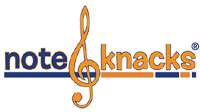Tuesday I spoke about “thoughtful “demonstrations” taking place in our classrooms. It is a term I read in Regie Routman’s book Invitations in reference to teaching reading and writing in language arts. She talks about how important it is to model excellent reading and writing skills. This thought fascinates me because I don’t think we do it as much as we can or should as a music education community. Music textbook series will come with big books that we use in front of the class. I have been known to point to the notes as we sing them. A child will then come up and do the same. I have had students follow along in their textbooks as I play a song. We have identified quarter notes and barred eighth notes etc… Perhaps we have gone a bit farther, but not to where I think we could go. The questions that haunt me are”Can we do it better?” and “How do we teach so that students will be able to sight sing new material independently?” What if learners coming out of elementary school could pick up a piece of music and read it fluently in their heads?
In thinking about this question, I look to methods used in the language arts classroom. For the most part, they have been quite successful teaching children how to read. As I continue to blog throughout the year, I will explore many of their techniques, but today I am pondering the use of demonstrations. Routman speaks about modeling how to read and write what students are working on. If we teach these skills, we should be doing them ourselves. I read music when I play and write short singing games for my students, but I have never composed a piece of music per se. I am now inspired to do so AND to do it in front of my students. Let’s discuss the issues that come up together as a class and give kids an inside look into how I would handle them. I am also inspired to show my students violin music I am working on and how I practice a particularly difficult passage. We think this is only for older students, but how can we utilize it for the younger grades?
We all know to pull from the music we are working on, so let’s start there. Kenneth Goodman, who is best known for his work with “whole language” (a methodology for teaching language arts) found in his research that students could read words in context that they could NOT read out of context. They expect text to make sense. This will work a bit differently in music, but knowing this, when we pull measures or passages from a song, it needs to start as a part of the whole piece. It no longer makes sense to isolate it and just work on that alone. When a difficult measure or passage arises, we can look at what we already read and figure it out. We, as teachers, can model how to take what we know and apply it to what we don’t know. We will demonstrate a strategy to working out the difficult passage together, so that eventually, students will be able to it independently. If we continue this throughout the year, imagine how many strategies students will have available to them and how many of them will be well practiced!
In the weeks ahead, I will be playing around with how I demonstrate concepts and let you know how it is going. Please comment below and let us know how you model excellent reading and composing skills.
